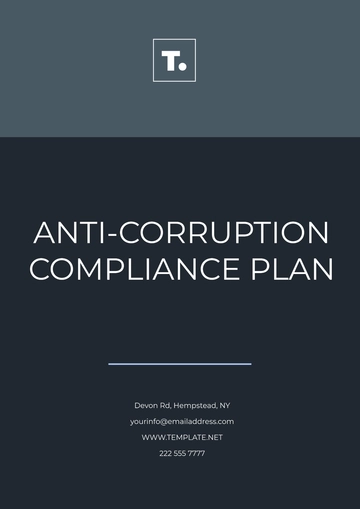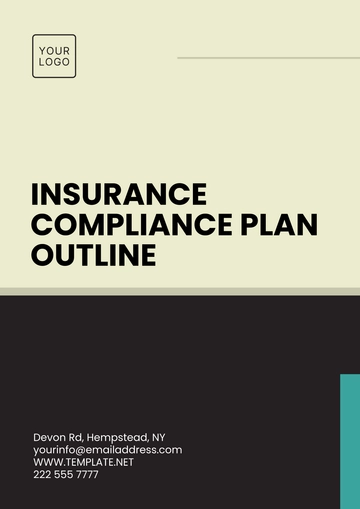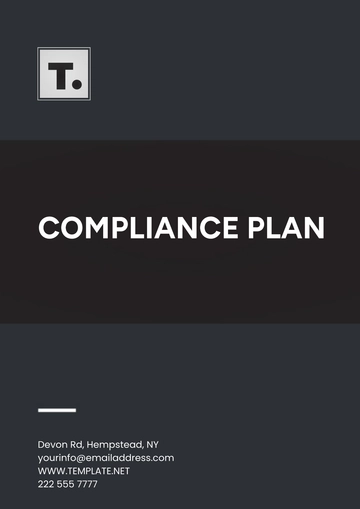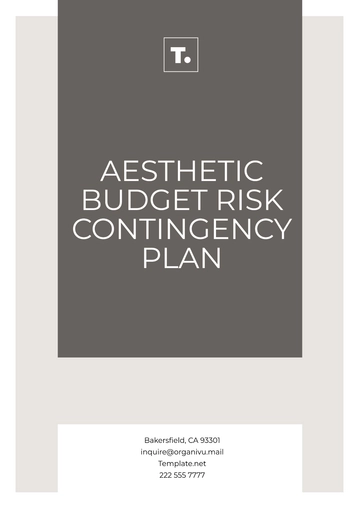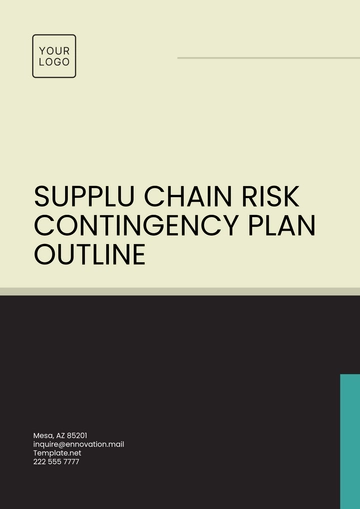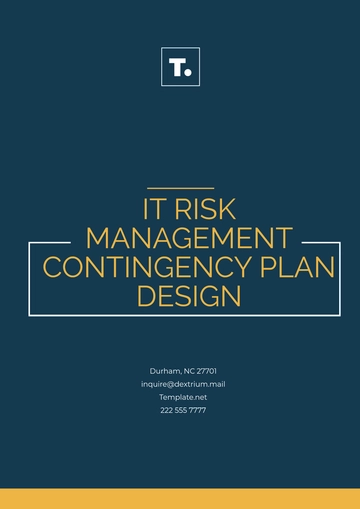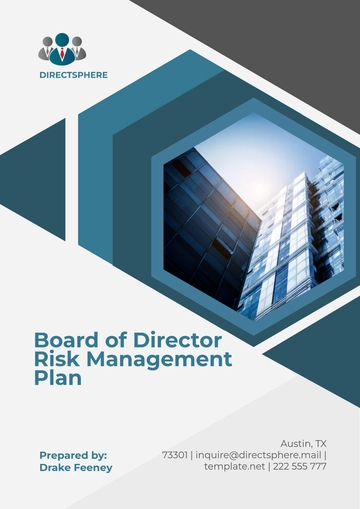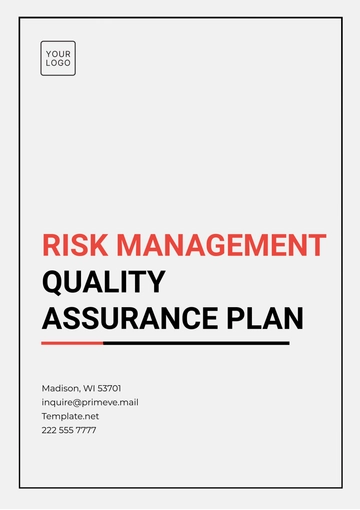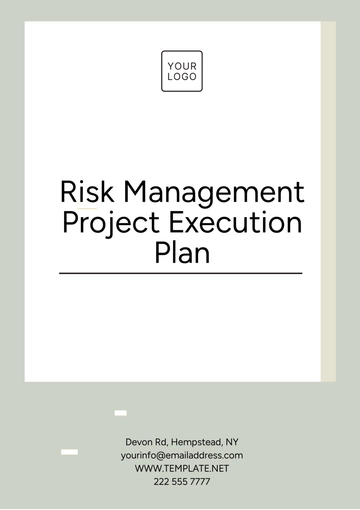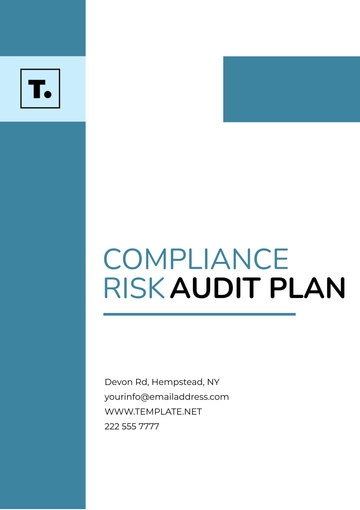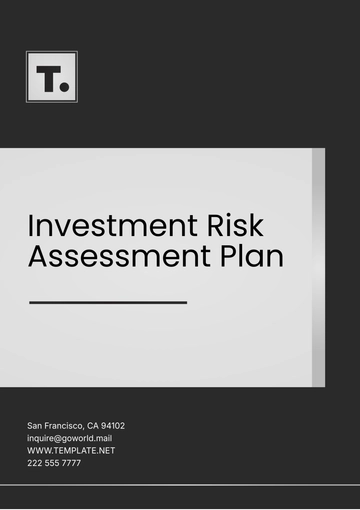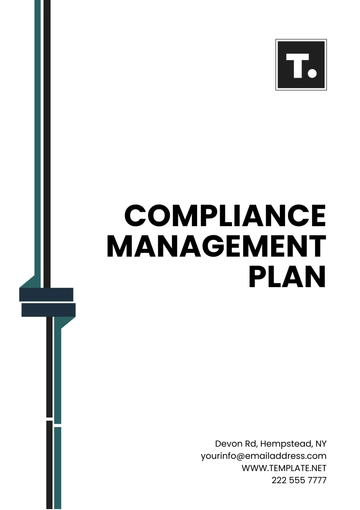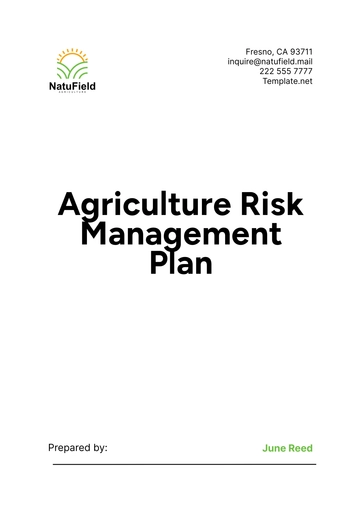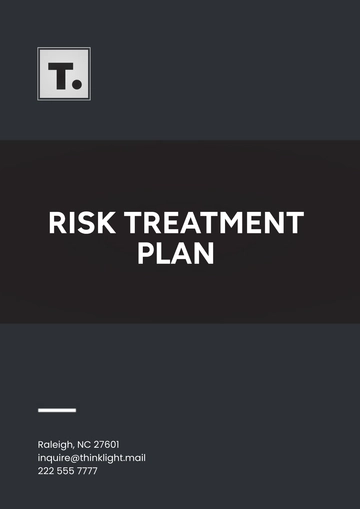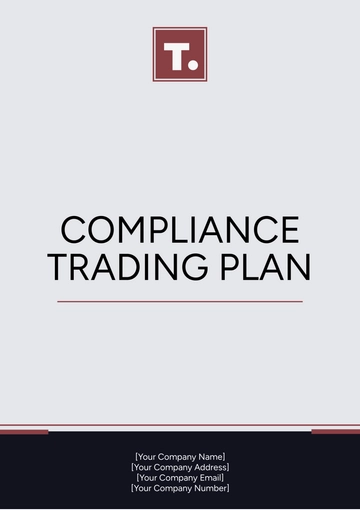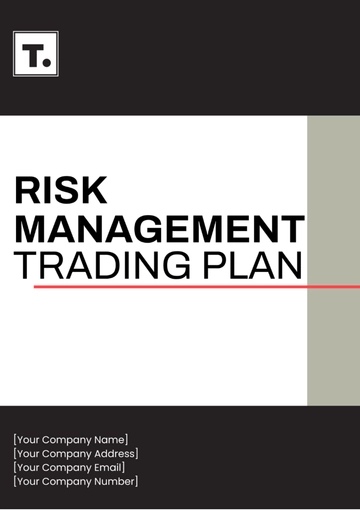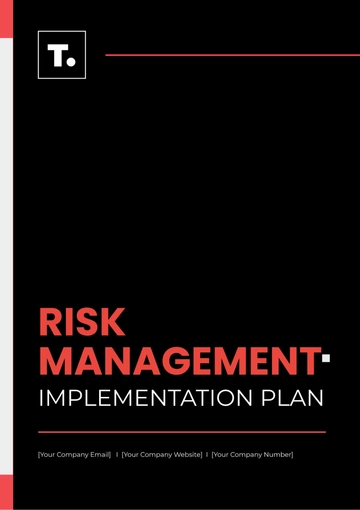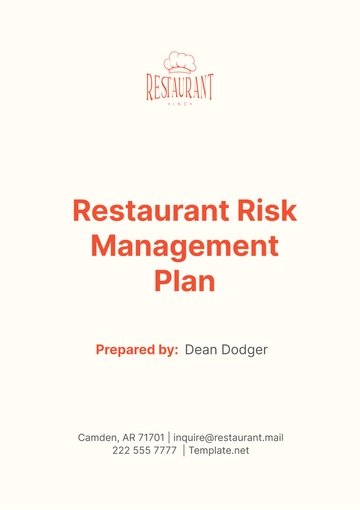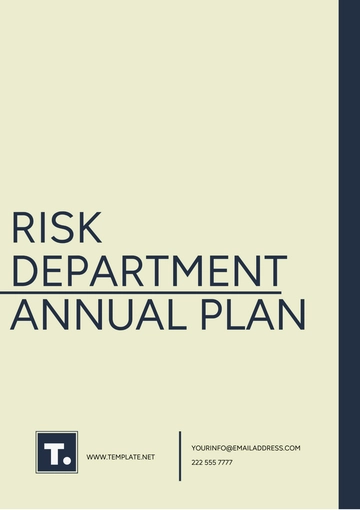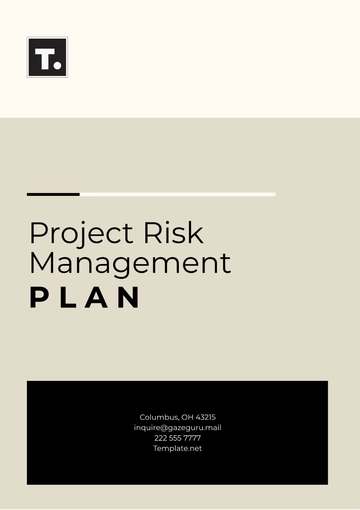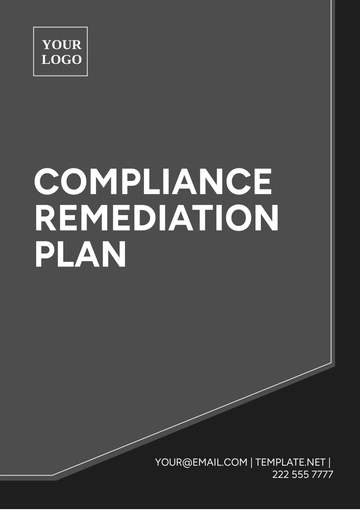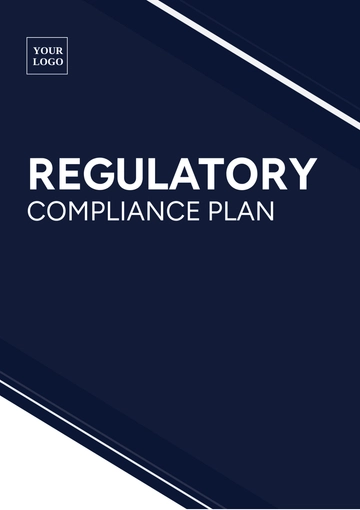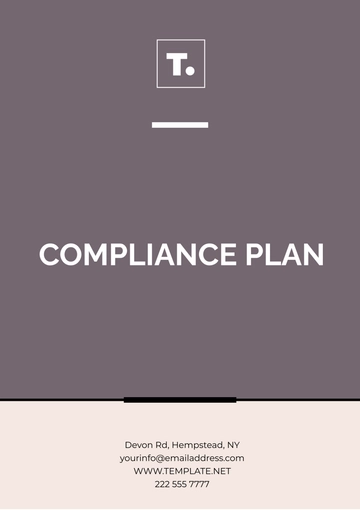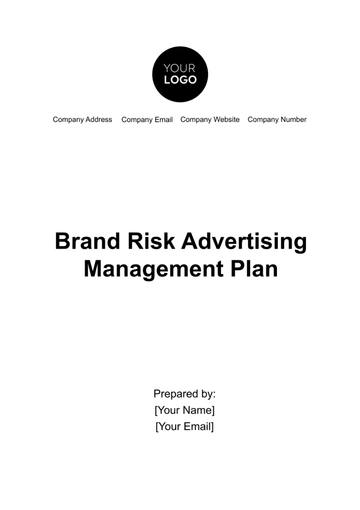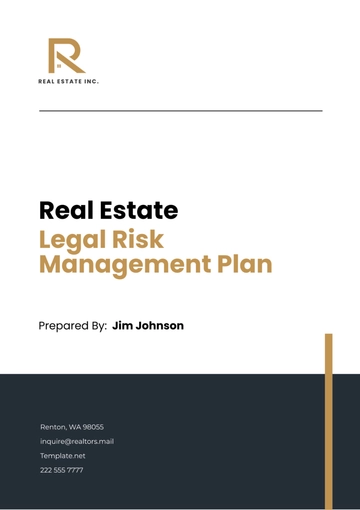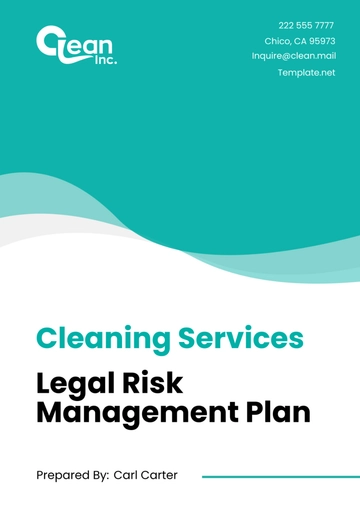Free Emergency Risk Management Plan
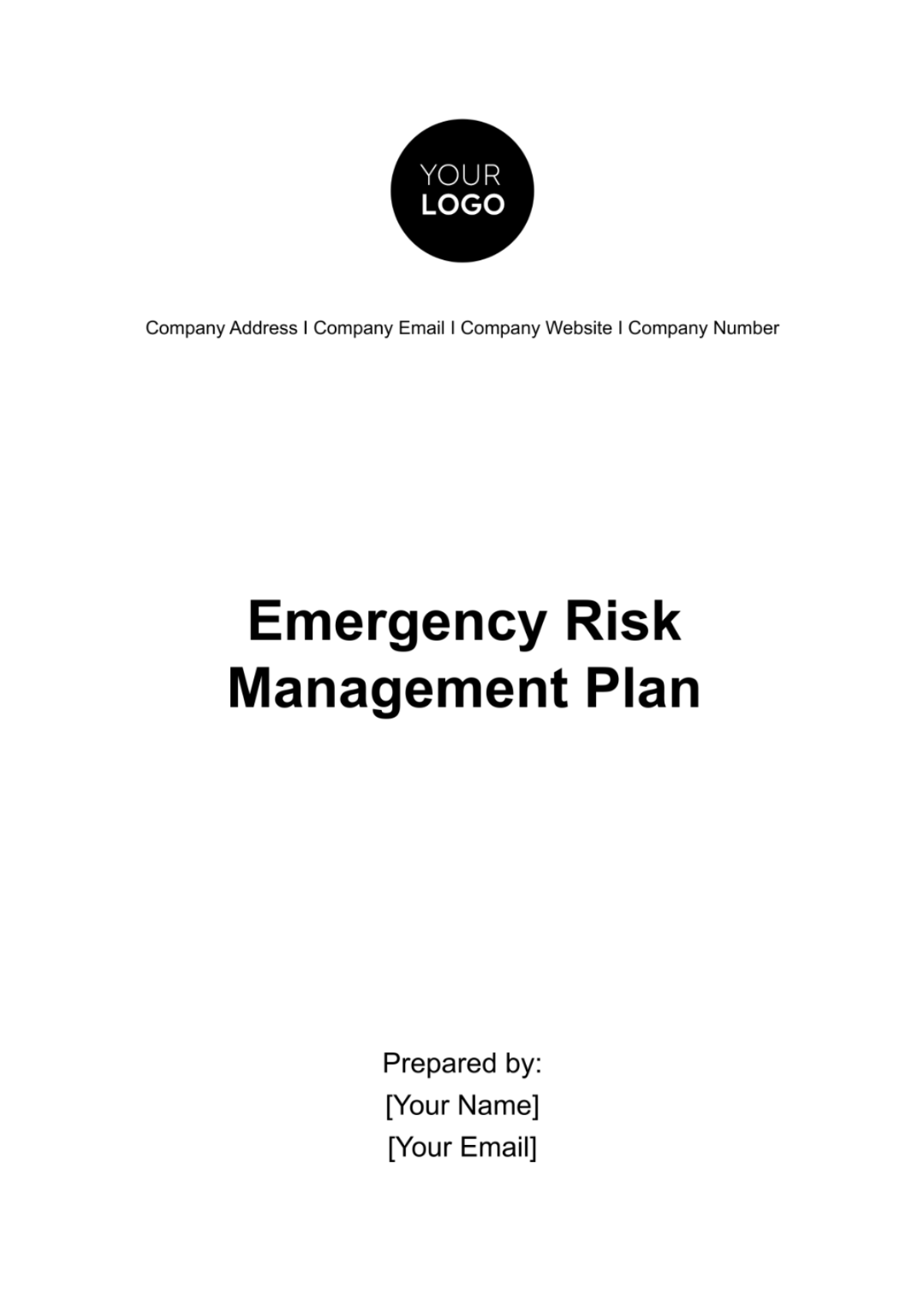
1. Executive Summary
At [Your Company Name], we hold the utmost importance of Emergency Risk Management (ERM) in our business operations. This Executive Summary provides an overview of our ERM commitment and the core objectives of our comprehensive plan.
Our ERM strategy is rooted in the proactive identification, rigorous assessment, and effective mitigation of potential risks. These risks can range from natural disasters to human-made incidents, each posing unique challenges. This plan represents our dedication to ensuring the safety, health, and security of our employees while safeguarding our valuable assets.
In an unpredictable world, [Your Company Name] acknowledges the necessity of having a structured and agile approach to emergencies. Our ERM plan aligns with industry best practices and standards to provide a robust framework for mitigating the impact of unforeseen events. We understand that preparedness is not an option but a responsibility, and our plan underscores our commitment to this responsibility.
Throughout this document, we outline the key components of our ERM plan, from risk assessment to emergency preparedness, resource allocation, monitoring, and training. We believe that a well-prepared organization is not only more resilient but also better equipped to protect its most valuable assets – its people and reputation.
2. Introduction
In an ever-changing world, the unpredictability of emergencies underscores the need for a steadfast and comprehensive approach to risk management. Emergencies, whether natural or human-made, have the potential to disrupt operations, jeopardize the safety of our employees, and put our assets at risk. Recognizing this reality, we have developed our Emergency Risk Management Plan.
At [Your Company Name], we acknowledge that being prepared for emergencies is not a matter of choice but a solemn responsibility. This document embodies our commitment to establishing a structured and organized framework that equips us to respond effectively to a diverse spectrum of potential crises.
Our Emergency Risk Management Plan is not just a theoretical exercise; it is a proactive strategy aimed at safeguarding our operations and the well-being of our employees. We understand that the impact of an emergency can be far-reaching, affecting not only our business but also our community and stakeholders.
This plan is not a mere contingency; it is a testament to our dedication to resilience, preparedness, and our unwavering commitment to protecting what matters most. As you delve into the details of this document, you will find a comprehensive approach to identifying, assessing, and mitigating risks, ensuring the safety of our employees, and safeguarding our assets.
In the following sections, you will discover the intricacies of our Emergency Risk Management Plan, from risk assessment to emergency preparedness, response procedures, resource allocation, monitoring, and evaluation. Each element is a crucial building block in our commitment to a secure and resilient future.
We invite you to explore this plan and join us in our endeavor to create a safer and more secure environment for all. Together, we can navigate the challenges of the unforeseen and emerge stronger and better prepared.
3. Company Profile
Company Name: [Your Company Name]
Email: [Your Email]
Website: [Your Company Website]
Address: [Your Company Address]
Phone Number: [Your Company Number]
Social Media: [Your Company Social Media]
4. Risk Assessment
In our pursuit of a secure and resilient business environment, the chapter on Risk Assessment delves into our systematic approach to identifying and managing potential hazards. This structured process plays a pivotal role in ensuring the continuity of our operations while safeguarding the well-being of our employees.
Table: Risk Assessment
Subheading | Description |
Hazard Identification | Our risk assessment initiates an exhaustive Hazard Identification process. All potential threats, whether originating internally or externally, are methodically identified, ensuring no vulnerabilities go unnoticed. |
Risk Analysis | Following hazard identification, a comprehensive Risk Analysis is conducted. This phase entails evaluating the likelihood and potential impact of each identified hazard. We prioritize these risks based on their severity and urgency, guiding our risk mitigation strategies effectively. |
5. Emergency Preparedness
In our commitment to fostering a resilient and responsive workplace, the chapter on Emergency Preparedness outlines our proactive measures to tackle unforeseen crises effectively. By establishing a structured framework for emergency response, we aim to minimize the impact of incidents and prioritize the safety of our personnel and stakeholders.
5.1. Emergency Response Team
Central to our Emergency Preparedness strategy is the formation of a dedicated Emergency Response Team (ERT). This specialized group comprises trained and equipped individuals, selected based on their expertise and willingness to act swiftly in times of crisis. Their roles and responsibilities are meticulously defined to ensure a coordinated and efficient response, even in high-stress situations.
Our ERT undergoes rigorous training and simulation exercises to prepare them for a variety of emergency scenarios. By equipping them with the necessary skills and knowledge, we empower them to make informed decisions and take immediate action when required. Whether it's a natural disaster, industrial accident, or any other emergency, our ERT is the first line of defense, working tirelessly to protect lives and assets.
5.2. Communication Plan
Effective communication is the linchpin of any successful emergency response. To this end, we have developed a robust Communication Plan that encompasses both internal and external stakeholders. In times of crisis, timely and accurate information dissemination is critical to minimize confusion and enable swift decision-making.
Our Communication Plan outlines the channels, procedures, and protocols for sharing information during emergencies. It ensures that all employees are promptly informed of the situation and receive clear instructions on how to respond. Additionally, our plan extends beyond our organization to include external partners, authorities, and the community, fostering a collaborative and coordinated approach to crisis management.
By prioritizing the establishment of a highly trained Emergency Response Team and implementing a comprehensive Communication Plan, we fortify our readiness to face emergencies head-on. These measures are fundamental to our commitment to safeguarding lives, minimizing disruption, and preserving the integrity of our operations.
6. Emergency Response Procedures
Ensuring the safety of our employees and stakeholders during emergencies is our top priority. The Emergency Response Procedures chapter delineates our systematic approach to handling crises, encompassing evacuation strategies and immediate medical response protocols.
Table: Emergency Response Procedures Details
Emergency Procedure | Details |
Evacuation Plan | Clear escape routes, assembly points, and evacuation procedures. Regular drills for familiarity and preparedness. |
Medical Response | Immediate medical assistance procedures, first aid kit locations, AED availability, and trained personnel for swift response. |
These Emergency Response Procedures are integral to our commitment to maintaining a safe and secure workplace. They provide clear guidance for our employees and stakeholders to follow in times of crisis, ensuring a well-coordinated and effective response that prioritizes safety and well-being.
7. Resource Allocation
In times of crisis, resource allocation becomes a pivotal factor in determining the effectiveness of our emergency response. This chapter elucidates our proactive approach to ensuring that the necessary resources, including personnel, equipment, and supplies, are readily available to support our emergency response efforts.
Personnel: We understand that having a dedicated and well-trained workforce is the cornerstone of an effective emergency response. To this end, we allocate personnel specifically trained for various roles within the Emergency Response Team (ERT). These individuals undergo rigorous training and simulations to ensure they are prepared to act swiftly and decisively during emergencies. Their roles and responsibilities are clearly defined, creating a structure that promotes an organized and efficient response.
Equipment: Adequate equipment is essential for executing effective emergency response procedures. Our commitment to resource allocation encompasses the procurement and maintenance of essential equipment, ranging from first aid kits and automated external defibrillators (AEDs) to specialized equipment tailored to our specific industry needs. Regular maintenance and inspection ensure that these assets remain in optimal condition and are readily accessible when needed.
Supplies: In tandem with personnel and equipment, we recognize the importance of having essential supplies readily available during emergencies. This includes provisions such as food, water, blankets, and other necessities that may be required to sustain our personnel and affected individuals until the situation is stabilized.
Our resource allocation strategy ensures that we are well-prepared to mount a rapid and effective response, thereby minimizing the impact of emergencies on our operations, employees, and stakeholders. This commitment to allocating the necessary resources underscores our dedication to safety, resilience, and the well-being of all involved parties.
8. Monitoring and Evaluation
In our unwavering commitment to maintaining the highest standards of emergency preparedness and response, we recognize the paramount importance of continuous monitoring and evaluation. This chapter delves into our systematic approach to assessing and enhancing our emergency response efforts.
Table: Monitoring and Evaluation
Category | Details |
Key Performance Indicators (KPIs) | Monitor response times Analyze incident reports Assess recovery efforts. |
Training and Drills | Conduct regular training sessions Perform emergency drills Simulate scenarios. |
9. Budget Allocation
A well-structured and transparent budget allocation is fundamental to the effective implementation of our Emergency Risk Management Plan. This chapter outlines our commitment to allocating resources prudently to support the various components of our plan, ensuring its robustness and sustainability.
Table: Budget Allocation Details
Category | Allocation Amount | Description |
Training | [$1000] | Funds allocated for training materials development and procurement.<br>- Investment in training sessions and exercises for our Emergency Response Team (ERT). |
Equipment | Allocation for the acquisition and maintenance of essential equipment, including first aid kits, AEDs, and other emergency response tools.<br>- Regular equipment inspections and maintenance. | |
Communication Tools | Funds dedicated to communication tools, including emergency notification systems, two-way radios, and other communication devices.<br>- Maintenance and upgrades of communication infrastructure. | |
Resources and Personnel | Allocation for personnel training, ERT member stipends, and resources necessary for their preparedness.<br>- Supplies for our response teams and personnel, including food, water, and blankets. | |
Miscellaneous Expenses | Contingency budget to cover unforeseen expenses that may arise during emergency response efforts.<br>- Ensuring financial flexibility to adapt to evolving emergency scenarios. |
Our budget allocation strategy reflects our commitment to preparedness and our employees' safety and well-being. By prudently allocating resources to training, equipment, communication tools, and other essential components, we fortify our readiness to address emergencies effectively and minimize their impact on our organization and stakeholders.
10. Conclusion
[Your Company Name] is unwavering in its dedication to safeguarding our most valuable assets – our employees, assets, and operations. Our Emergency Risk Management Plan serves as a testament to our commitment to resilience, preparedness, and the unwavering pursuit of a secure and well-protected workplace. By proactively identifying, assessing, and mitigating risks, we stand poised to face any challenge with determination, ensuring the safety and continuity of our organization and its stakeholders.
11. Appendix A: Hazard Identification Table
Hazard | Likelihood | Potential Impact |
Fire | High | High |
Chemical Spill | Medium | Medium |
Natural Disaster (e.g., earthquakes) | Low | High |
Power Outage | Medium | Medium |
Cybersecurity Breach | Low | High |
Workplace Violence | Low | Medium |
12. Appendix B: Emergency Contacts
[Provide a list of emergency contact numbers]
13. Appendix C: Emergency Response Team
Name | Role |
[ERT Member 1] | Team Leader |
[ERT Member 2] | First Aid Specialist |
[ERT Member 3] | Evacuation Coordinator |
[ERT Member 4] | Communications Officer |
[ERT Member 5] | Logistics Coordinator |
[ERT Member 6] | Safety Officer |
14. Appendix D: Training and Drill Schedule
Date | Type of Training/Drill | Location | Participants | Objective |
[Date 1] | Emergency Evacuation Drill | Main Office | All Employees | Test evacuation procedures. |
[Date 2] | First Aid Training | Training Room | Designated Staff | Provide basic first aid knowledge. |
[Date 3] | Fire Safety Drill | Warehouse | Warehouse Staff | Test fire safety protocols. |
[Date 4] | Cybersecurity Training | Online | IT Department | Enhance cybersecurity awareness. |
[Date 5] | Medical Emergency Drill | Manufacturing | Production Team | Practice medical response procedures. |
- 100% Customizable, free editor
- Access 1 Million+ Templates, photo’s & graphics
- Download or share as a template
- Click and replace photos, graphics, text, backgrounds
- Resize, crop, AI write & more
- Access advanced editor
Prepare for emergencies with ease using Template.net's Emergency Risk Management Plan Template. This editable and customizable template, equipped with our Ai Editor Tool, simplifies the creation of comprehensive risk management plans tailored to your organization. Safeguard your assets and ensure preparedness for unforeseen events with Template.net's innovative solutions.
You may also like
- Finance Plan
- Construction Plan
- Sales Plan
- Development Plan
- Career Plan
- Budget Plan
- HR Plan
- Education Plan
- Transition Plan
- Work Plan
- Training Plan
- Communication Plan
- Operation Plan
- Health And Safety Plan
- Strategy Plan
- Professional Development Plan
- Advertising Plan
- Risk Management Plan
- Restaurant Plan
- School Plan
- Nursing Home Patient Care Plan
- Nursing Care Plan
- Plan Event
- Startup Plan
- Social Media Plan
- Staffing Plan
- Annual Plan
- Content Plan
- Payment Plan
- Implementation Plan
- Hotel Plan
- Workout Plan
- Accounting Plan
- Campaign Plan
- Essay Plan
- 30 60 90 Day Plan
- Research Plan
- Recruitment Plan
- 90 Day Plan
- Quarterly Plan
- Emergency Plan
- 5 Year Plan
- Gym Plan
- Personal Plan
- IT and Software Plan
- Treatment Plan
- Real Estate Plan
- Law Firm Plan
- Healthcare Plan
- Improvement Plan
- Media Plan
- 5 Year Business Plan
- Learning Plan
- Marketing Campaign Plan
- Travel Agency Plan
- Cleaning Services Plan
- Interior Design Plan
- Performance Plan
- PR Plan
- Birth Plan
- Life Plan
- SEO Plan
- Disaster Recovery Plan
- Continuity Plan
- Launch Plan
- Legal Plan
- Behavior Plan
- Performance Improvement Plan
- Salon Plan
- Security Plan
- Security Management Plan
- Employee Development Plan
- Quality Plan
- Service Improvement Plan
- Growth Plan
- Incident Response Plan
- Basketball Plan
- Emergency Action Plan
- Product Launch Plan
- Spa Plan
- Employee Training Plan
- Data Analysis Plan
- Employee Action Plan
- Territory Plan
- Audit Plan
- Classroom Plan
- Activity Plan
- Parenting Plan
- Care Plan
- Project Execution Plan
- Exercise Plan
- Internship Plan
- Software Development Plan
- Continuous Improvement Plan
- Leave Plan
- 90 Day Sales Plan
- Advertising Agency Plan
- Employee Transition Plan
- Smart Action Plan
- Workplace Safety Plan
- Behavior Change Plan
- Contingency Plan
- Continuity of Operations Plan
- Health Plan
- Quality Control Plan
- Self Plan
- Sports Development Plan
- Change Management Plan
- Ecommerce Plan
- Personal Financial Plan
- Process Improvement Plan
- 30-60-90 Day Sales Plan
- Crisis Management Plan
- Engagement Plan
- Execution Plan
- Pandemic Plan
- Quality Assurance Plan
- Service Continuity Plan
- Agile Project Plan
- Fundraising Plan
- Job Transition Plan
- Asset Maintenance Plan
- Maintenance Plan
- Software Test Plan
- Staff Training and Development Plan
- 3 Year Plan
- Brand Activation Plan
- Release Plan
- Resource Plan
- Risk Mitigation Plan
- Teacher Plan
- 30 60 90 Day Plan for New Manager
- Food Safety Plan
- Food Truck Plan
- Hiring Plan
- Quality Management Plan
- Wellness Plan
- Behavior Intervention Plan
- Bonus Plan
- Investment Plan
- Maternity Leave Plan
- Pandemic Response Plan
- Succession Planning
- Coaching Plan
- Configuration Management Plan
- Remote Work Plan
- Self Care Plan
- Teaching Plan
- 100-Day Plan
- HACCP Plan
- Student Plan
- Sustainability Plan
- 30 60 90 Day Plan for Interview
- Access Plan
- Site Specific Safety Plan
